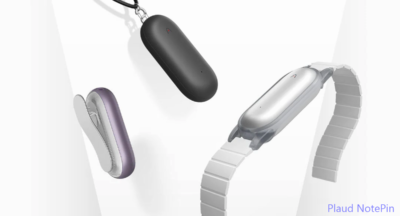Today’s Android phones have large, bright screens and high-end capabilities that drain a lot of battery life. Here’s how to get the most out of your battery’s capacity. There are a number of variables that contribute to your Android phone’s poor battery life. Phone batteries suffer as a result of thinner bodies, better screens, quicker processors, more background applications, and faster internet connections, but manufacturers are compensating by installing more powerful batteries.
The Google Pixel 6 Pro has a battery capacity of 5,003mAh, which can last for over 22 hours. Depending on the model, Samsung’s Galaxy phones can last anywhere from 11 to 13 hours. Even so, there are techniques to make any phone perform better.
The menu settings vary depending on the phone; in this case, we utilised a Samsung Galaxy S 20 FE running Android 11. However, all Android smartphones should have a comparable set of capabilities. With this proviso in mind, here are some tips for extending the life of your Android phone’s battery.
Read More: Some Home Android Troubleshooting Methods to Consider
1. Select Power Saving Mode from the drop-down menu.
Do you think you’ll be in a position where you’ll need your phone’s battery to last longer than usual? Put your phone in power-saving mode, which automatically disables functions that drain your battery. We entered Settings > Battery and device care on our test device, then tapped the Battery entry.
We enabled Power saving mode underneath the battery usage chart to immediately limit networking, syncing, and location services, as well as reduce the screen’s refresh rate. However, we could further tweak the feature by turning off the Always on Display, restricting CPU speed to 70%, or lowering brightness by 10% to save even more battery life by tapping Power saving mode.
When power saving mode is enabled, the Limit applications and Home screen option allows just specified programmes to run and limits all background activity. Multiple power saving mode presets may be available for previous versions of Android, each with a distinct combination of performance and battery life.
2. Your Friend Is Airplane Mode
Sending and receiving wireless signals will drain your phone’s battery, so if you don’t need to utilise your network connection, consider putting on Airplane mode. The simplest option is to open the pull-down shade and press the Airplane mode button to switch off mobile data, disable Bluetooth, and disconnect from Wi-Fi. To regain access, tap it once more.
3. It’s Too Bright On Your Screen
Smartphone screens are large and dazzling, but they also consume a lot of power. You probably don’t need to use the brightest setting on your gadget. Reduce the brightness of your screen by going into your Display settings. You may also regulate the brightness by opening the pull-down screen. Consider turning off auto brightness while you’re at it. This feature changes the brightness of your display based on your perceived demands, but it can also make it brighter than it needs to be. Your eyes (and batteries) will thank you if you turn off the switch next to Adaptive brightness.
4. Turn off your computer screen
When it comes to your phone’s screen, it’s fine to switch it off when not in use. Under Display settings, you can choose how long the screen stays on. Set the Screen timeout option to make your screen switch off faster when not in use.
Also, what about the always-on display, which shows the time and date even when the phone’s screen is turned off? Turn it off. Select Always on Display from your phone’s lock screen settings. You can schedule it to turn off when you aren’t using it, have it just display when you tap the screen, or fully turn it off.
5. Disable Active Listening.
When you use a wake word to activate your voice assistant, it is continually listening to you and draining your battery. This may be convenient, but it consumes more energy than it is worth. You may disable this feature in Google Assistant or Samsung’s Bixby to save some battery life.
Because Assistant is built into the Android operating system, you can access it by holding down the home screen button and tapping the inbox icon. Otherwise, launch the application. Open Hey Google & Voice Match by tapping your profile image, then disable Hey Google if it’s turned on.
You may simply turn Bixby off if you’re continually having problems with it. Here are step-by-step instructions for turning off Bixby on your phone.
6. Use the right screen in dark mode.
Dark mode is pleasing to the sight, but it has no effect on battery life unless your device has an OLED or AMOLED display. Most older phones feature LCD screens, but Samsung, OnePlus, and Google’s flagship phones have switched to this newer display technology.
If your phone has an OLED or AMOLED display, that means the phone shuts off the pixels that are displaying black, allowing you to save battery when all those bright white panels have gone dark. According to iFixit, going to dark mode can save you up to an hour of battery life.
Dark mode is available on some phones in Android 9 (Pie), but it wasn’t available on all phones until Android 10 was released. Toggle Dark Mode on and off by opening the pull-down shade and tapping it. If not, go to your phone’s Display settings and make your selection. You may also use the Dark mode options to establish a timer for when dark mode should be activated.
Read More: How to dispose of your old phone via recycling
7. Be in Command of Your Apps
Even when you aren’t using an app, it continues to run in the background. Of course, this will chew up data and battery life over time. Under the Battery or App Power Management options, you can put unused apps to sleep. Limits on background consumption can be set and enabled. To avoid apps losing your battery life, put unwanted apps to sleep.
You may take it a step further and tell your phone to put specific apps to sleep manually. Tap the addition (+) symbol to add your app to the list of Sleeping apps or Deep Sleeping apps. Keep in mind that sleeping apps only get updates on a regular basis, and deep sleeping apps won’t run unless they’re used, so updates may be delayed.
It’s a good idea to check on the applications that drain your battery the fastest on a regular basis to see if there are any outliers that you can uninstall or disable. This information is available in Settings under battery usage, where you can determine which apps should be permitted to run in the background and which should be shut off while not in use.
8. Turn Down the Volume on Your Phone
Modern smartphones are miniature supercomputers that fit in your hand, but if you’re just browsing the web, you don’t need the processor to be working at maximum speed all of the time. Stop the phone from overworking itself by going to the Battery options and selecting Enhanced processing, which ensures faster data processing at the expense of battery life. Make sure this is turned off.
Another thing to keep an eye on is your screen’s refresh rate. Turning this up higher can help make screen animations look smoother, but it isn’t necessary and uses more battery than usual. Open Display options and look for Motion smoothness. Make sure the screen refresh rate is set to the usual 60Hz rather than the improved 120Hz or higher.
9. Make the Process Automated
Automate the procedure if all of this is too much to remember. Locate the automation options in your phone’s Battery settings. Tap the three-dot menu in Android 11, then select Automation and enable Adaptive power saving. When you’re not using the phone, this will turn battery saving mode on and off automatically.
You can also use Google Assistant to create programmable routines out of your phone settings. To add new commands, open Google Assistant, press your profile icon, and then click Routines. For example, you could set it up such that when you tell Google you’re leaving the house, the phone prompts you to put on power saving mode, and when you’re home, it prompts you to turn on Airplane Mode.
Tap Add action after selecting a routine (or + to create a new one). While there are many preset actions, we’ll use the bottom of the list to try creating our own. Basically, if you can give Google Assistant a command, type it in and convert it into a routine.
You may also use If This Then That (IFTTT) to construct automated workflows that turn down services like Wi-Fi and Bluetooth based on your location, or stop certain services when your battery reaches a certain percentage. Greenify, on the other hand, detects which apps are most likely to waste battery life and turns them off to keep your phone battery running smoothly.








